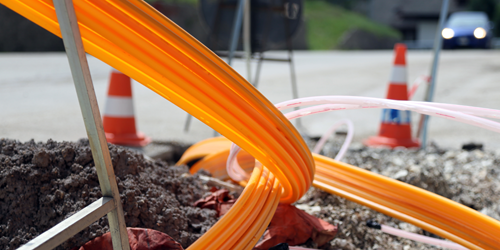Demonstrating Quantum Communication Under Realistic Conditions
The ability to securely transmit data is crucial for today’s digital society. One promising cryptographic approach that exploits the fundamental laws of quantum physics is known as twin-field quantum key distribution (twin-field QKD). A team of researchers led by Jian-Wei Pan and Teng-Yun Chen at the University of Science and Technology of China, and by Xiang-Bin Wang at the Jinan Institute of Quantum Technology, China, has now demonstrated this technique over the longest distance to date in a real-world setting [1]. The team says that the demonstration confirms the feasibility of the technique outside of the lab.
In twin-field QKD, two spatially separated parties (“Alice” and “Bob”) secretly encode qubits in single photons, which they send to each other via a third party, “Charlie.” Charlie performs a single-photon interference protocol. This interference allows Charlie to infer whether the secret qubits of Alice and Bob are the same or different (00 or 11 versus 01 or 10), but Charlie can’t determine the absolute values, making the scheme hack-proof.
In their demonstration, the team performed a field test of twin-field QKD, sending the photons along 428 km of commercial optical fiber between two users separated by a line-of-sight distance of 300 km. (Alice was in Jinan, China, and Bob in Qingdao, China. Charlie sat roughly halfway between the two in Linyi.)
Chen says that twin-field QKD has been achieved along longer optical fibers; the record so far was over 500 km. But in that case, the fiber was coiled up inside a lab, so the physical separation of Alice and Bob was minimal. It was time to realize a long-distance demonstration in the real world, Chen says.
–Katherine Wright
Katherine Wright is the Deputy Editor of Physics Magazine.
References
- H. Liu et al., “Field test of twin-field quantum key distribution through sending-or-not-sending over 428 km,” Phys. Rev. Lett. 126, 250502 (2021).




